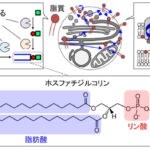カリフォルニア大学サンディエゴ校の科学者は、多くの種類のがんで多く産生される遺伝子産物が、最も一般的な頭頸部がんにおいて、免疫反応の上昇と予後の改善につながることを明らかにしました。 UC San Diego scientists link high levels of a gene product, abundantly produced by many types of cancer, with an elevated immune response and improved outcomes in the most common form of head and neck cancer.
2023-03-13 カリフォルニア大学サンディエゴ校(UCSD)
この研究は、2023年3月10日にPNAS Nexusに掲載されました。この発見は、特定の頭頸部がんに対して、これまでに混合された結果を示したがん免疫療法の可能性のある新しいターゲットとアプローチを示唆しています。
<関連情報>
- https://today.ucsd.edu/story/a-potential-new-target-for-head-and-neck-cancer-immunotherapy
- https://academic.oup.com/pnasnexus/article/2/3/pgad046/7034171
転写解析により、頭頸部がんにおけるB細胞とTERT発現が予後良好に関連することが判明 Transcriptional analysis links B cells and TERT expression to favorable prognosis in head and neck cancer
Su Xian, Magalie Dosset, Andrea Castro, Hannah Carter, Maurizio Zanetti
PNAS Nexus Published:10 February 2023
DOI:https://doi.org/10.1093/pnasnexus/pgad046

Abstract
Telomerase reverse transcriptase (TERT) is a conserved self-tumor antigen overexpressed in ∼85% of tumor cells and is immunogenic in cancer patients. The effect of TERT expression on the regulation of intratumor adaptive immunity has not yet been investigated. We used RNA sequencing data from The Cancer Genome Atlas (TCGA) in 11 solid tumor types to investigate potential interactions between TERT expression, and B and T cell infiltrate in the tumor microenvironment. We found a positive correlation between TERT expression, B and T cells in four cancer types with the strongest association in head and neck squamous cell carcinoma (HSNCC). In HNSCC a Bhigh/TERThigh signature was associated with improved progression-free survival (PFS) (P = 0.0048). This effect was independent of HPV status and not shared in comparable analysis by other conserved tumor antigens (NYESO1, MUC1, MAGE, and CEA). Bhigh/TERThigh HNSCC tumors also harbored evidence of tertiary lymphoid structure (TLS) such as signatures for germinal center (GC) and switched memory B cells, central memory CD4 and effector memory CD8 T cells. Bhigh/TERThigh HNSCC tumors also showed an up-regulation of genes and pathways related to B and T cell activation, proliferation, migration, and cytotoxicity, while factors associated with immunosuppression and cancer cell invasiveness were down-regulated. In summary, our study uncovers a new association between high TERT expression and high B cell infiltrate in HNSCC, suggesting a potential benefit from therapeutic strategies that invigorate intratumor TERT-mediated T-B cooperation.


